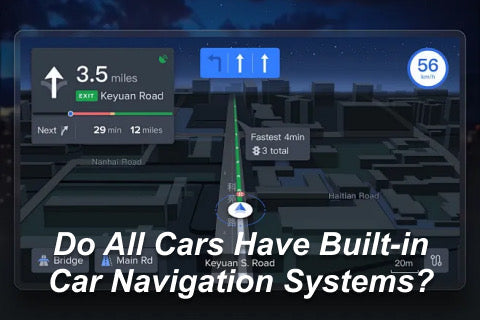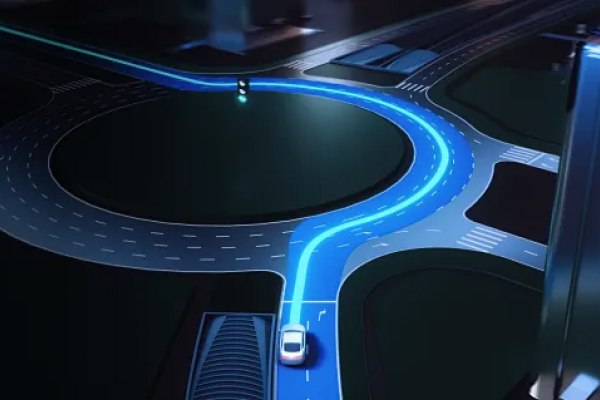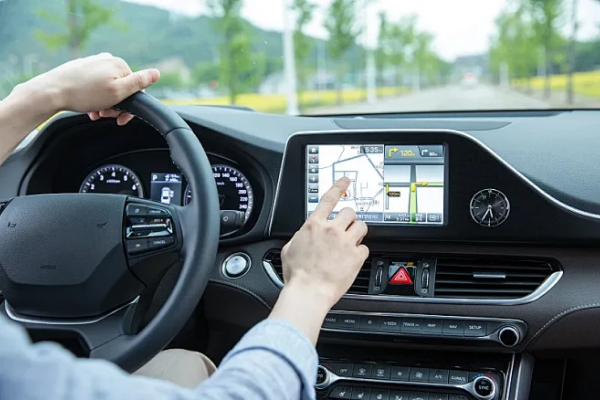
Do All Cars Have Built-in Car Navigation Systems?
The advent of car multimedia navigation systemshas revolutionized the way we travel, offering a level of convenience and efficiency that was once unimaginable. Gone are the days of cumbersome paper maps and frequent stops to ask for directions. In the digital age, getting from point A to point B is often as simple as typing in an address and following audio and visual cues. But with the proliferation of this technology, one might wonder: do all cars come equipped with built-in navigation systems? Let's explore the prevalence of these systems in today's automotive market and what alternatives exist for cars that lack them.
1.The Rise of Built-In Navigation Systems:

In the early days of car stereo with gps navigation, built-in systems were a luxury feature, often reserved for high-end models and trim packages. These systems integrated GPS technology with the vehicle's display to provide real-time location tracking and route guidance. Over time, as technology became more affordable and consumer demand increased, built-in navigation became more common, extending into a wider range of vehicles, including mid-range and even some entry-level models.
2.Built-In vs. Optional:
Despite their increased availability, not all cars come with multimedia on vehicle navigation systems as standard equipment. For many vehicles, particularly in the lower price brackets, navigation remains an optional feature or part of an upgraded technology package. Car manufacturers often offer tiered models with varying features, and built-in navigation might be bundled with other enhancements like premium audio systems or advanced safety features.
3.The Role of Trim Levels and Packages:
Car manufacturers typically offer different trim levels for each model, which can include various features and add-ons. A base model might not have a car video audio and navigation system included, while higher trims might offer it as standard. Additionally, some brands offer technology packages that can be added to lower or mid-tier trims, giving buyers the option to customize their vehicle with navigation without needing to purchase the most expensive model.
4.Alternatives to Built-In Systems:

For vehicles without native navigation systems, drivers have several alternatives. Portable GPS units can be mounted on the dashboard or windshield and offer similar functionality to built-in systems. Additionally, the widespread adoption of smartphones has introduced a new era of touch screen car stereo with navigation convenience. With apps like Google Maps, Waze, and Apple Maps, drivers can use their phones for turn-by-turn directions, often with up-to-date traffic information and route optimization.
5.Smartphone Integration:
The automotive industry has also embraced smartphone integration technologies, such as Apple CarPlay and Android Auto, which allow drivers to mirror their smartphone's navigation app onto the car's display screen. This integration provides a user-friendly interface and utilizes the phone's GPS while leveraging the larger, more accessible in-car display.
6.The Future of Car Navigation:
As we look to the future, navigation technology continues to evolve. Some manufacturers are experimenting with augmented reality (AR) navigation systems that project directional cues onto the windshield, providing an even more intuitive way to follow GPS guidance. Furthermore, with advancements in autonomous driving technology, future DVD car audio navigation systems may not only guide but also control the vehicle entirely on certain routes.
7.Conclusion:
While built-in navigation systems are more common than ever, they are not yet universal across all car models. The decision of whether to include one depends on the manufacturer, the specific model, and the chosen trim level or optional packages. For those without a built-in system, technology offers various alternatives that ensure drivers can always find their way. As we continue to drive forward, the integration of navigation systems into cars will likely become more standardized, reflecting the ever-growing importance of connectivity and convenience in our daily commutes and journeys.
